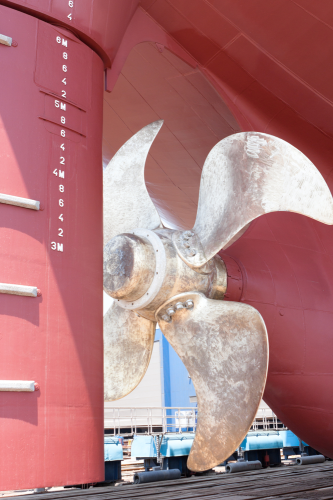
The 2.12 m diameter CFRP propeller was installed on the Taiko Maru, a 499 GT chemical tanker owned by Sowa Kaiun YK, in May 2014. The propeller was developed and produced by Nakashima Propeller with support from ClassNK.
During sea trials the CFRP propeller required 9% less horsepower to operate compared to conventional aluminum-bronze propellers.
The Taiko Maru had already installed CFRP propellers in its side thrusters in September 2012. Based on their successful performance, Sowa Kaiun YK decided to extend the use of the CFRP technology to its main propulsion system, making the vessel the first in the world to use a CFRP propeller for its main propulsion system.
Reduced fuel costs
Despite its light weight, CFRP exhibits the same, if not superior strength, to the aluminum-bronze composite materials used in conventional propellers, explains ClassNK. However the reduced weight of the CFRP propeller means propeller shafts can be manufactured with smaller diameters, contributing to a reduction in weight and fuel costs.
The sturdy yet thin blades of the CFRP propeller designed by Nakashima Propeller have been designed with an increased diameter (similar to the wings of a Boeing 787 aircraft). This should allow CFRP propellers to achieve even greater efficiency when employed for maritime use. The potential for further performance improvements is being explored.
ClassNK granted approval for the design and manufacturing process of the CFRP propeller, as well as providing research and funding support for the project as part of the ClassNK Joint R&D for Industry Program.
As part of its contribution to the project, ClassNK carried out rigorous fatigue testing and material testing to assess the basic mechanical properties of the CFRP propeller. It also conducted static load testing on full-scale propeller blades. ClassNK also evaluated the manufacturing process and quality control systems for the propeller.




